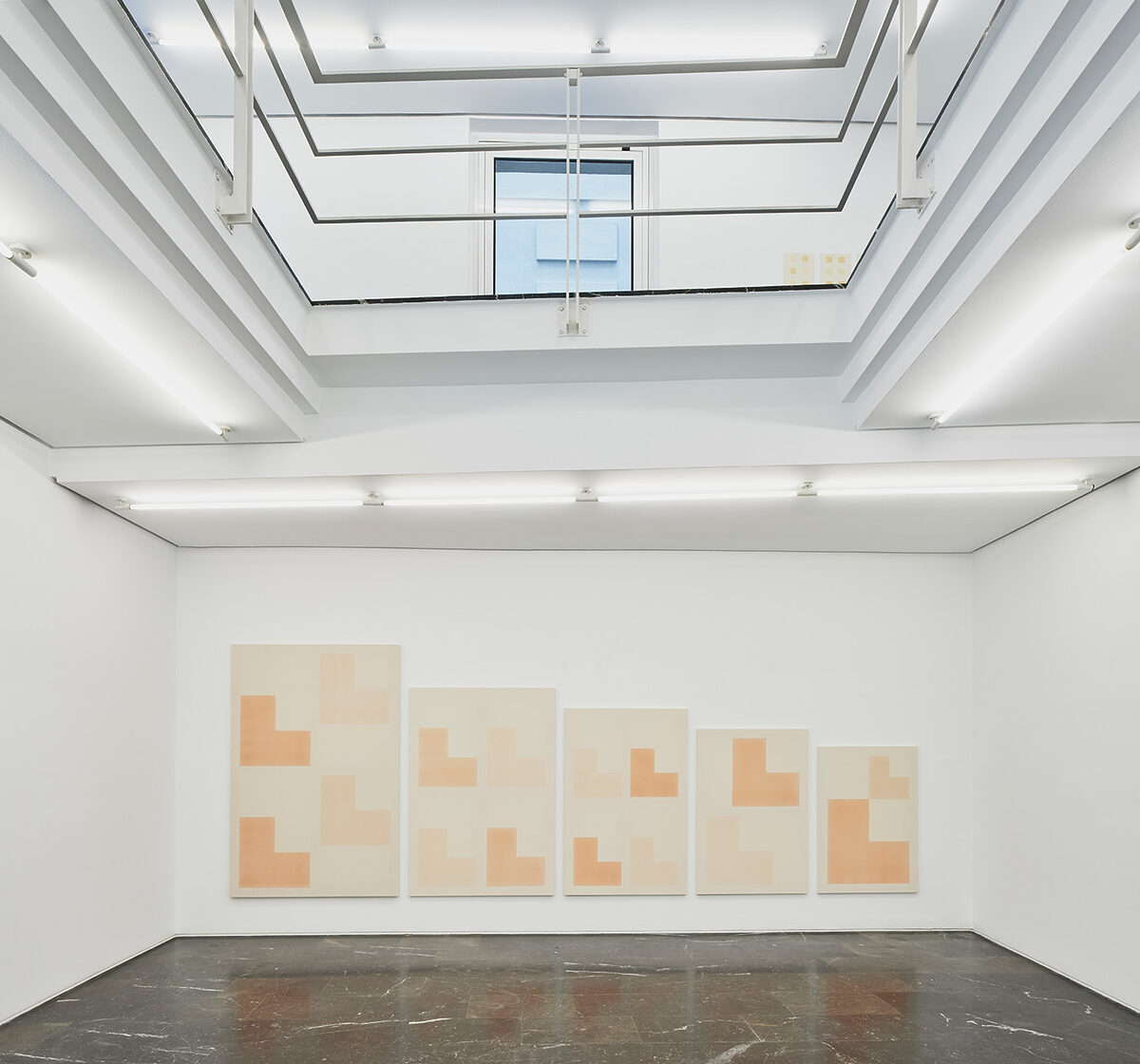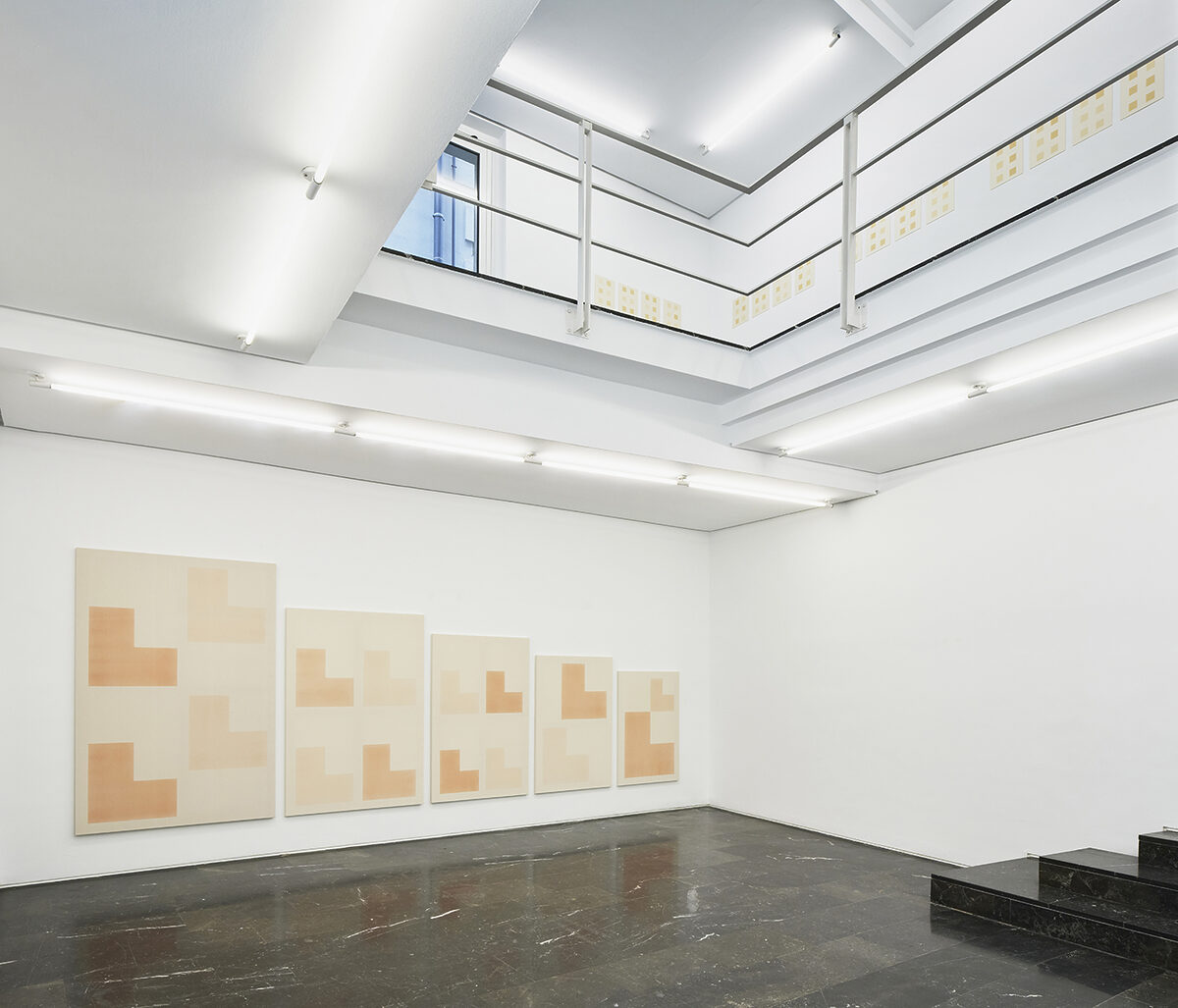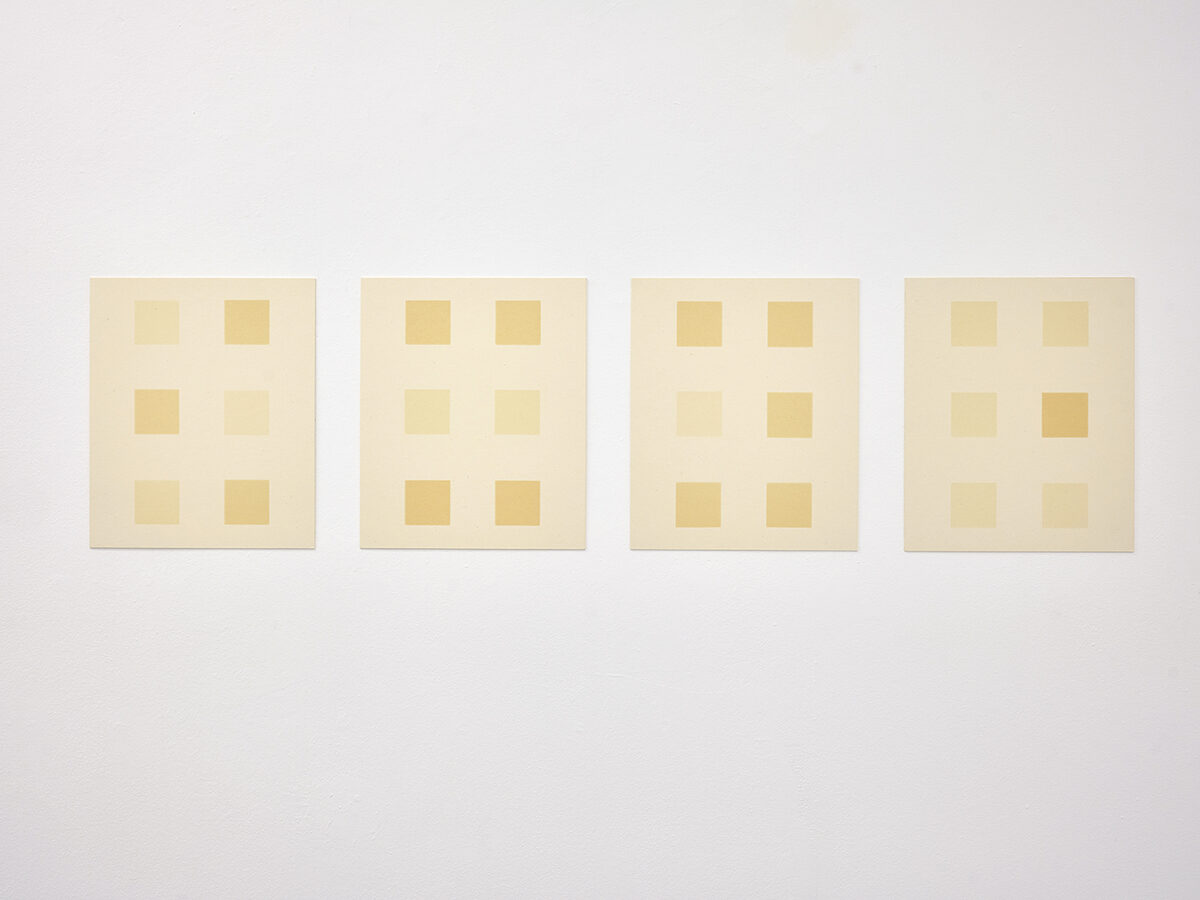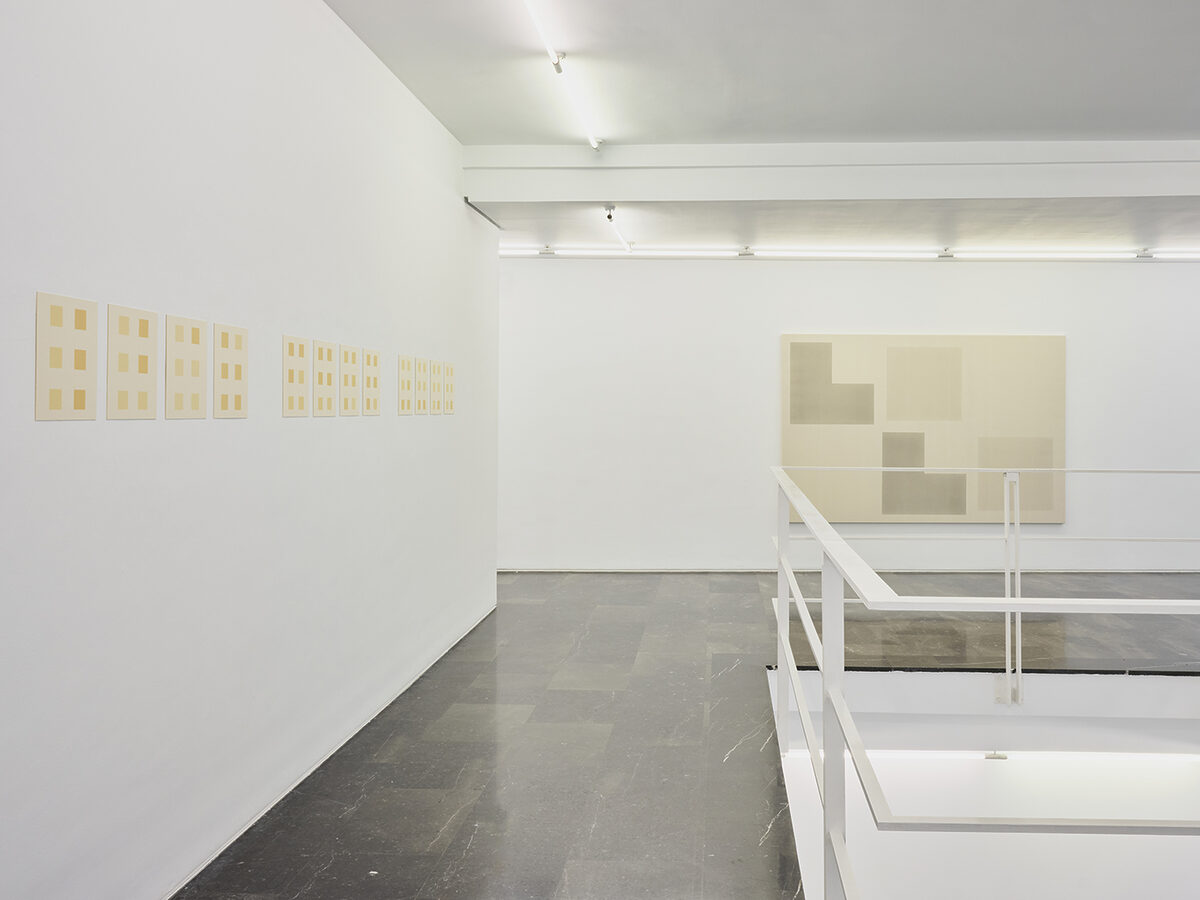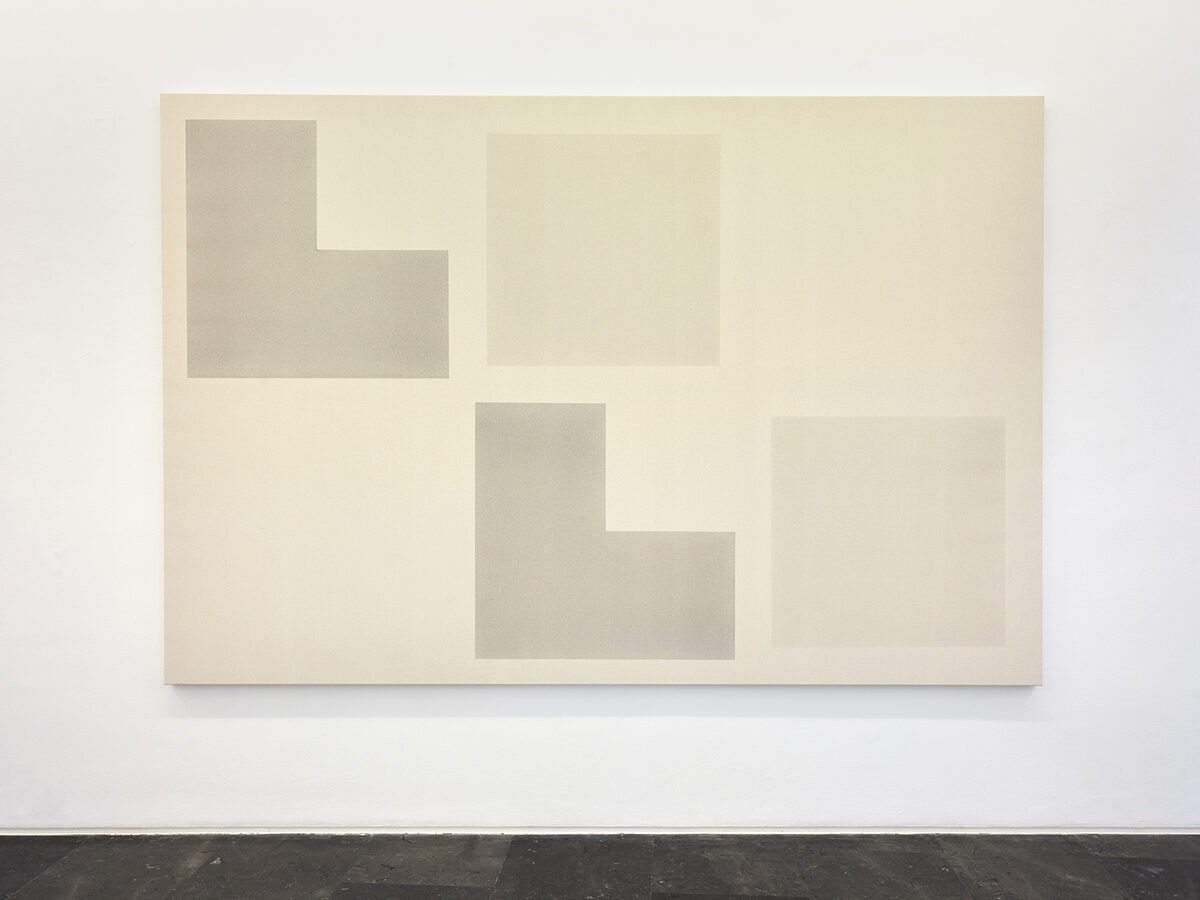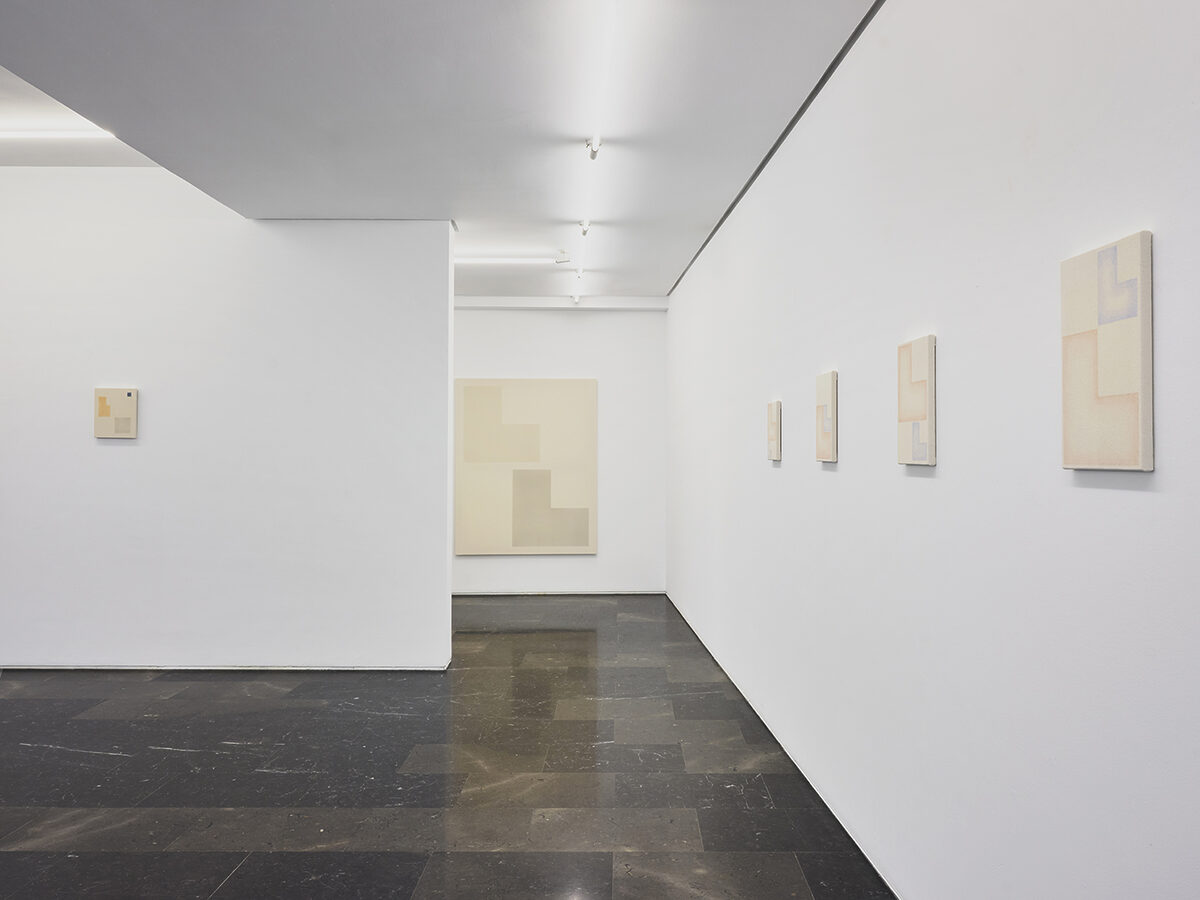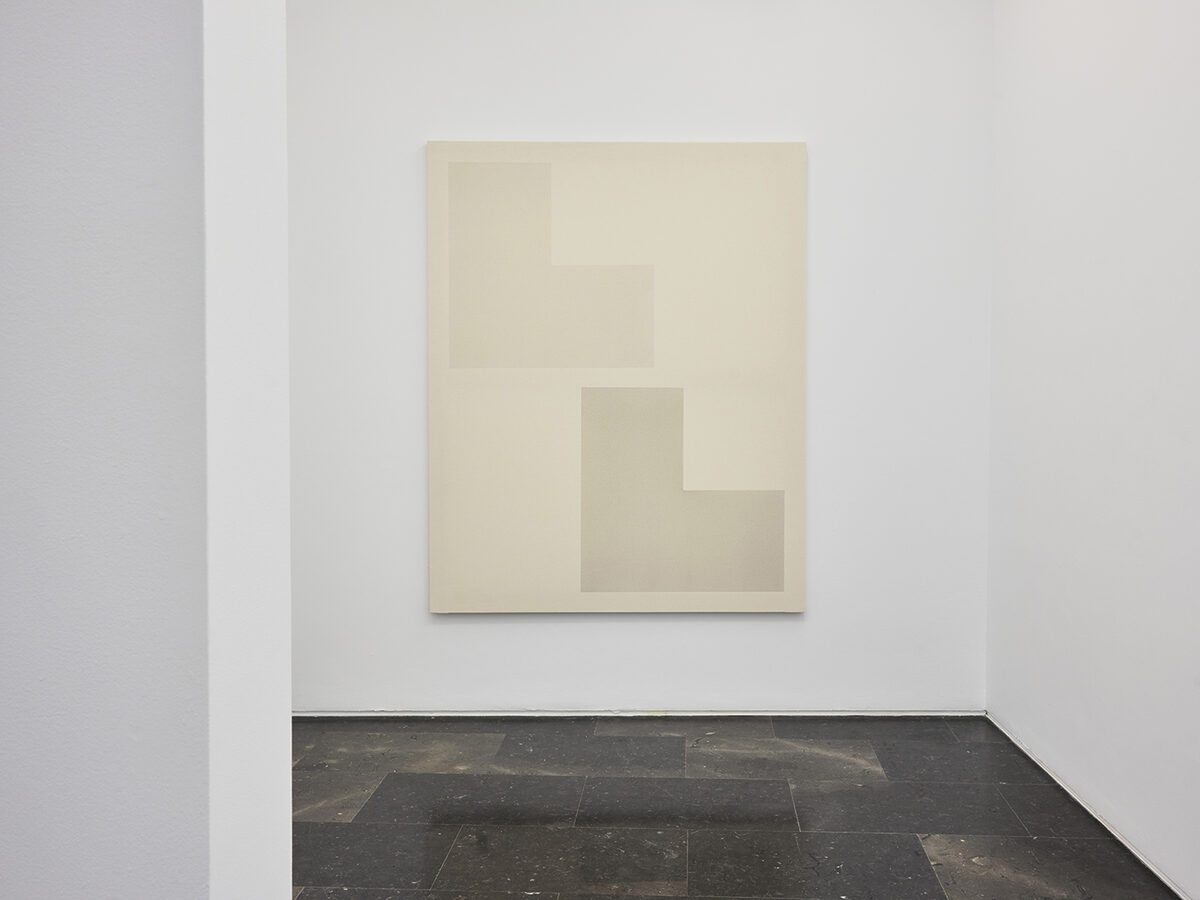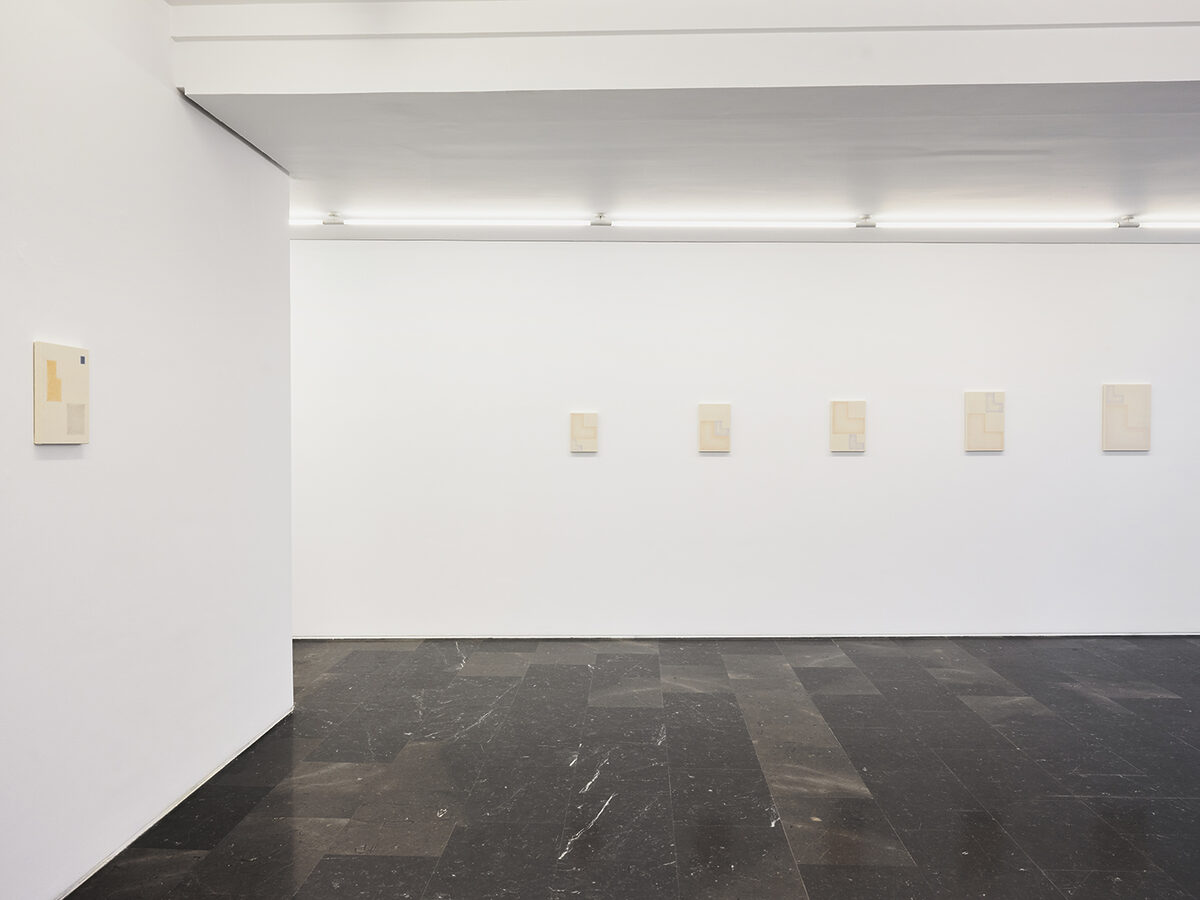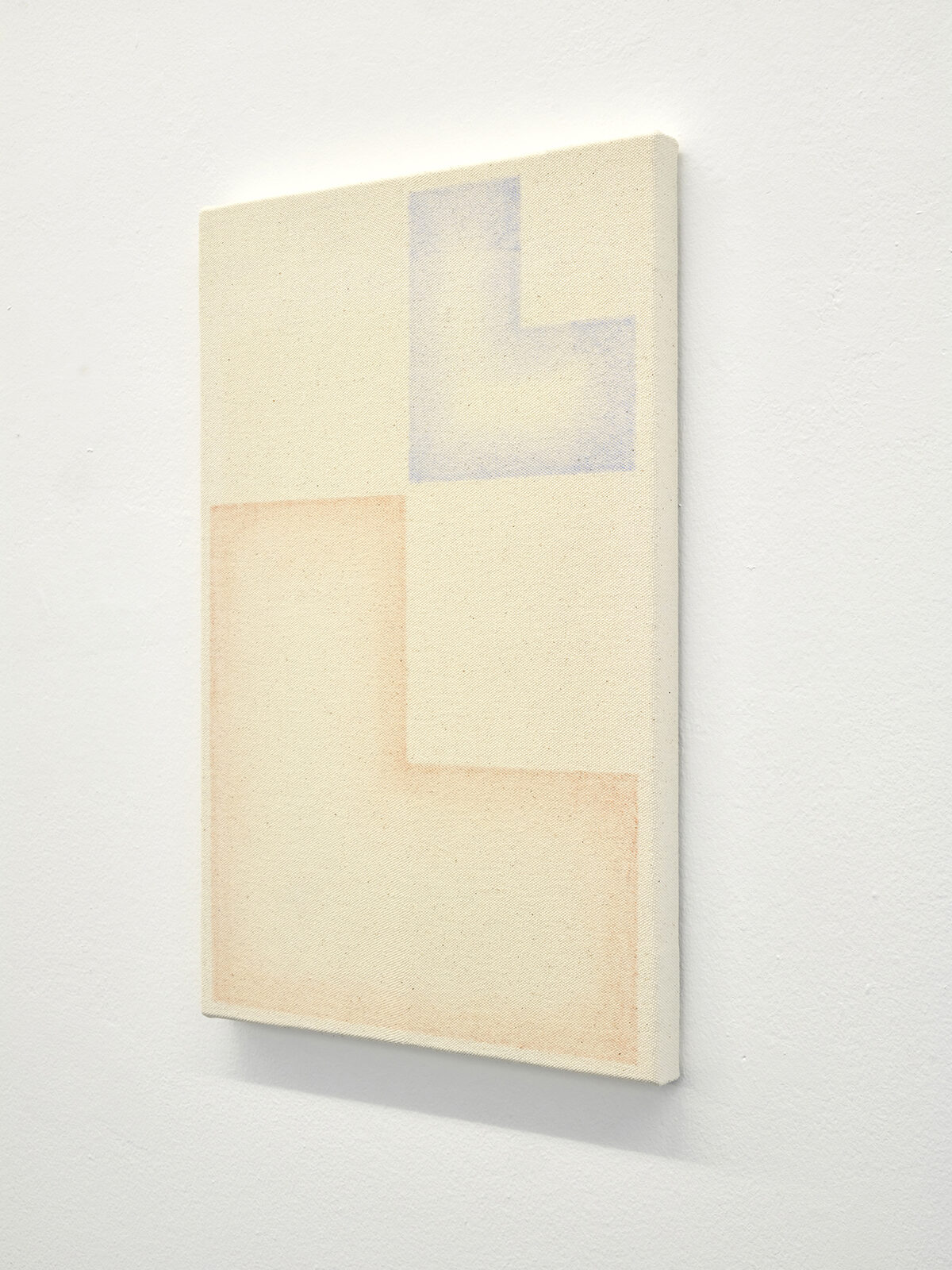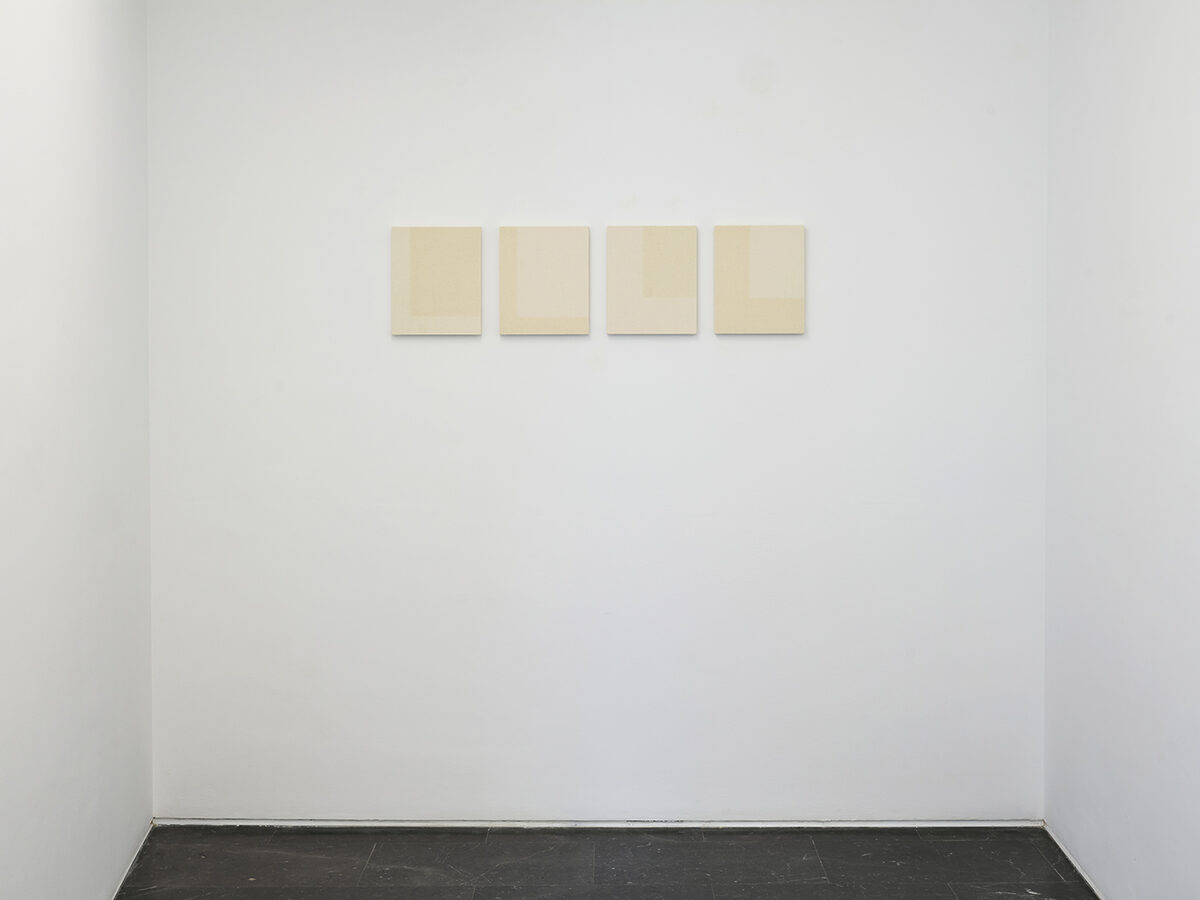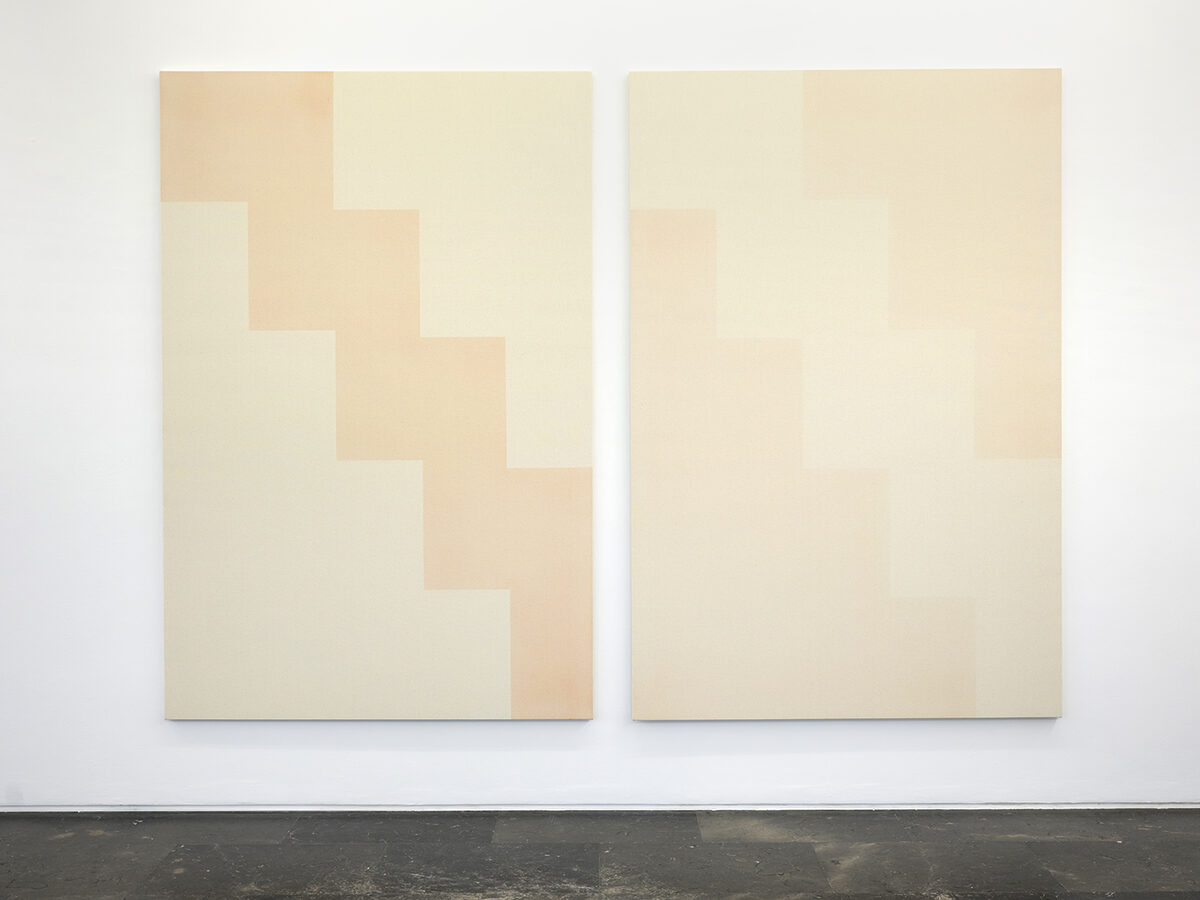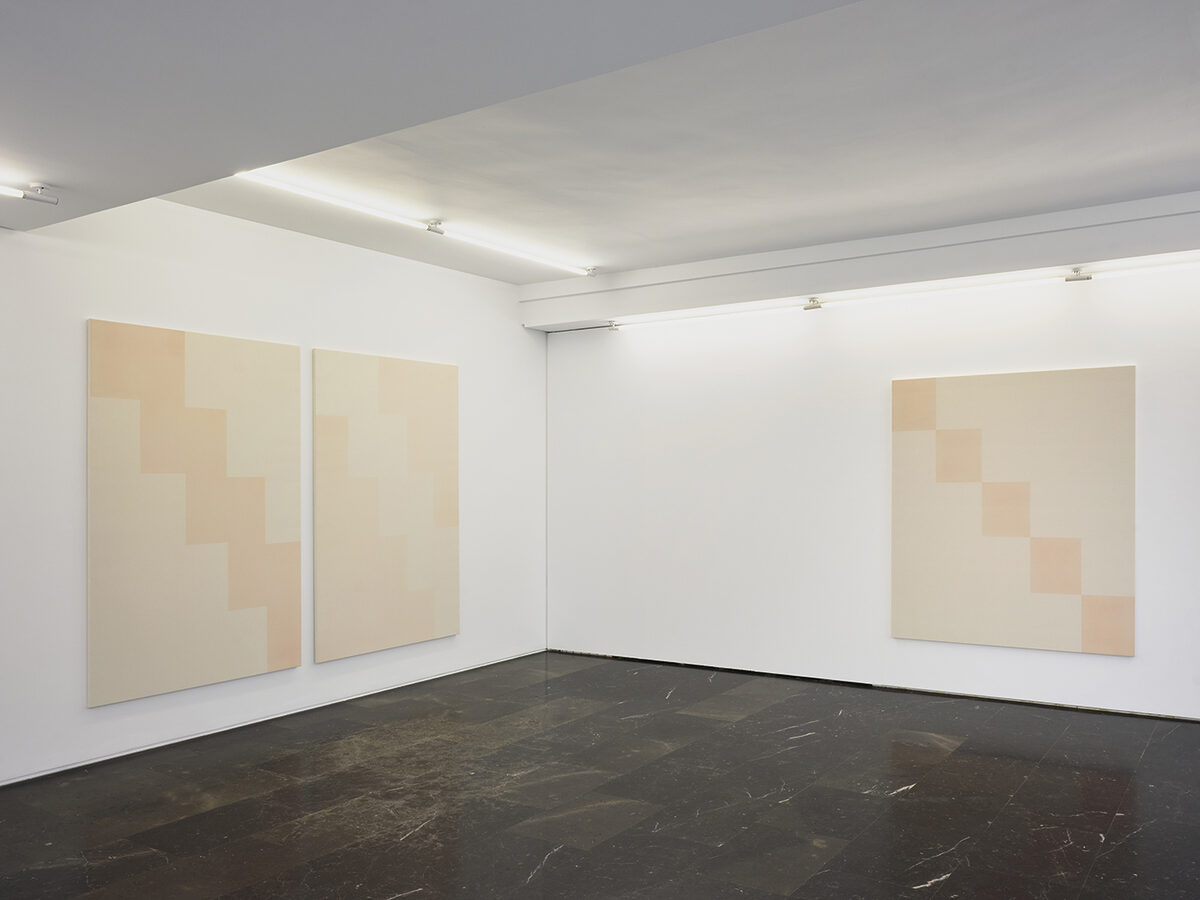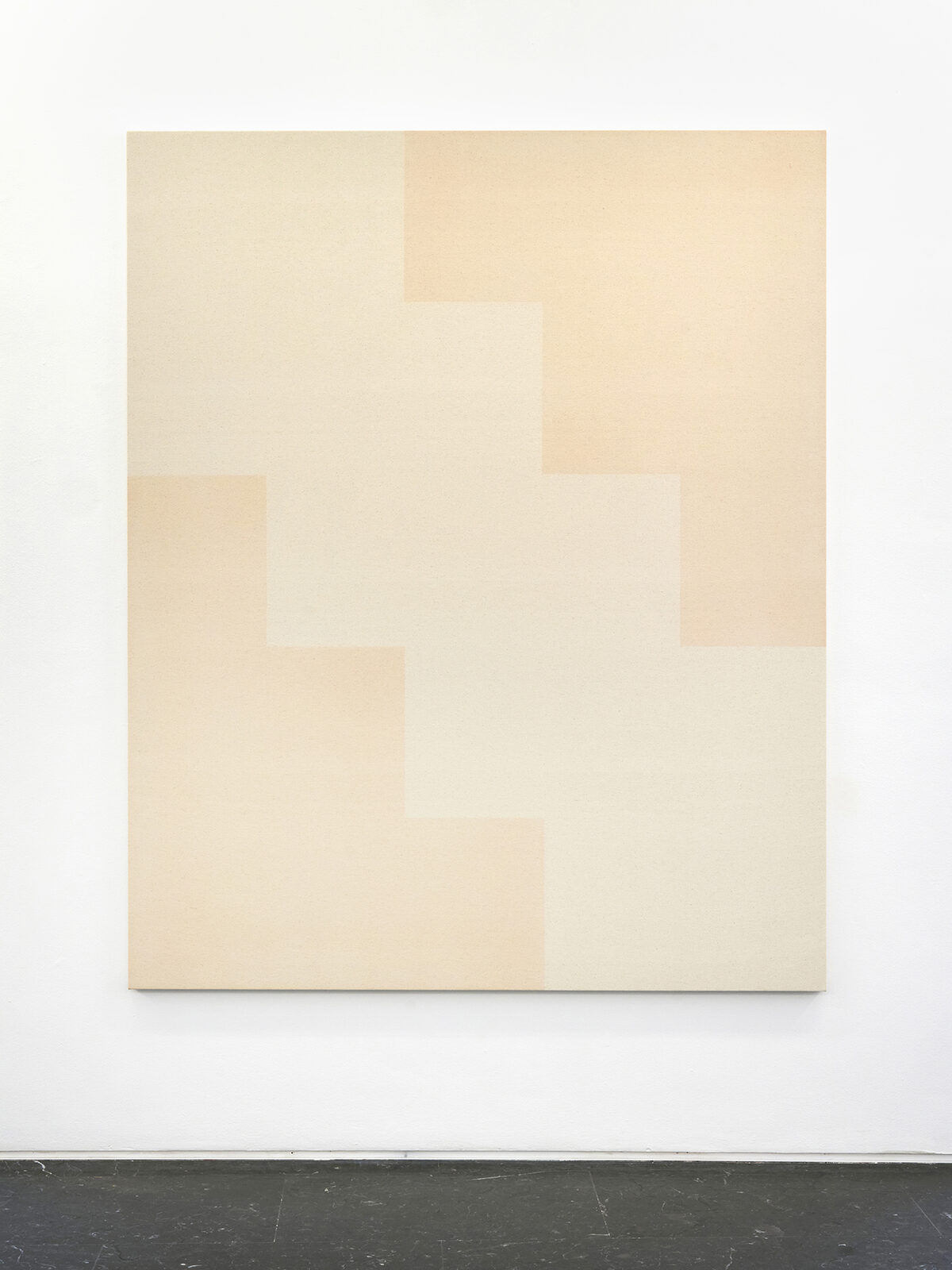Corte de bosque
The color? No, color is for later, always for later.1
“Corte de bosque” opens a new clearing in the artistic path of Manu Blázquez, showing for the first time a series of works where the beginning of color is given, an “earthy” beginning. The exhibition proposes a panorama of works, developed in the periphery of the last two years, where geometry is presented as a yearning for a habitable space, as well as an indefinite time, supported by multiple variations of grays that tend to the sanguine. A set of sinopias where figure and background are the same thing.
The exhibition opens a series of windows in the four rooms of the gallery. They are windows open to slow landscapes, made of negotiation between geometry and tremor. Color appears for the first time in the work of Manu Blázquez, but it is a color that comes not from the stain but from the line, earthy colors that are saturated only by the insistence of the line. The relationship with the material provokes the transfer of formats: drawing with engraving ink on the canvas of the painting, stains with line, engravings made of sun: photo-graphs? An incision of drawing repeated on the surface of the painting that proposes above all the measure of time of a stroke that is never a contour. The repeated gesture of marking the surface of the support to confirm that what is traced is made of time: they are lines but they could be seconds. The apparently ordered form that constructs a time of execution. The angle appears as the possible beginning of any arrangement of space, the domestic division between the horizontal and the vertical. It is the opening of the wall through the drawing/synopia of the fresco, like those of Fra Angelico in San Marco. The wall opens to other times, folds and speeds. We see the window, but we continue to see also and above all the wall that contains it. The pieces gathered in Corte de bosque are a sort of manual tomography on an ever-human scale of encounters between the formless and the block, a principle of accumulative geometry that points out first spaces. It is necessary to intuit in the out-of-field of the windows of Blázquez’s pieces the ascetic practice of a work of contemplation, of an almost meditative scratching, which demands a spectator at the same speed.
1 Gilles Deleuze, Painting. The concept of diagram. Page 229
